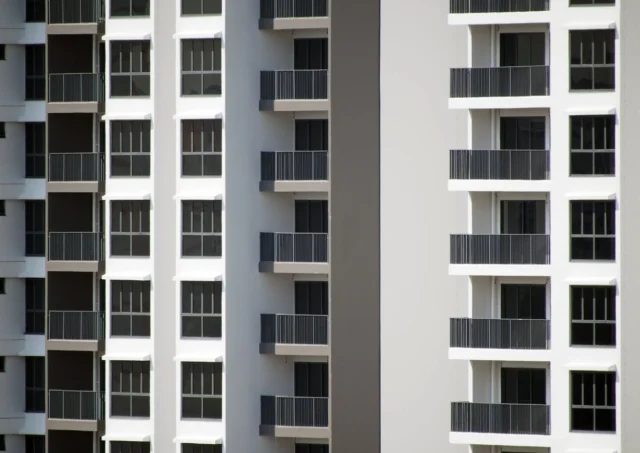The Reason Why the Waiting Period Is the Best Training Ground
The singapore bto flats waiting time is long, like a queuing line at the hawker center at lunchtime. You are aware that the food is on its way, but in the meantime you have a lot of minutes to occupy. And that is what the years preceding the key collection will buy you—time to tune your money fingers. When you develop good habits today, the habits will stick with you even after you move into your new flat. Think of it as a financial rehearsal before the main show.

Create the Emergency Fund First
A safety cushion must be your first thought before you even consider tiles, sofas, and smart TVs. Life is full of surprises—losing a job, being ill, or having to watch over your child. You will be tapping into renovation savings whenever something goes wrong without a buffer. Start small if you need to. Even $200 a month builds to a huge pot after years of waiting. Your future self will understand how thankful you were to your past self for being so foresighted.
Three-to-Six-Month Rule
One of the traditional tips is to save three to six months of living costs. This includes bills, food, transport and rent. It is not glamorous, and it is what makes all the other financial decisions less stressful. Think of it as shock absorbers for life’s potholes.
Avoid Lifestyle Inflation During the Wait
This is where most couples get into the trap of increasing salary, and increasing expenses go along with it. More dinners out, more online shopping, more weekend splurges. Then the bank account does not increase like the paychecks do. The secret about living below your means is to wait. Act as though you already have a mortgage payment to make. Invest that additional money in your housing fund. It is training for the actual one, and it makes you save faster.
The “Mock Mortgage” Technique
An ingenious trick is to put aside a certain sum each month, the same as you will be settling your loan at the end of the month. Make it a bill that you cannot pay. This is not only a way of creating discipline but also increasing your renovation fund. The wallet is already conditioned to the habit by the time the actual mortgage kicks in.
Use the Time to Kill Off Debt
Termites to your financial house are high-interest debts such as credit card balances. Left to themselves, they chew up all that you have to construct. These debts are ideal to be killed during the waiting years. Snowball them, avalanche them—whatever. Each dollar you save in interest is one extra dollar that you can use to buy yourself a future house. Think about how you are going to move into your flat mortgage-free. That’s real freedom.
A Story That Stings
One couple did not pay any attention to their rising credit card balance as they were saving up to get their flat. When keys were finally available, their renovation budget became very small since so much had been consumed by interest payments. Don’t repeat that mistake. Pay your debts before they accumulate.
Save for the Hidden Costs of Homeownership
Homeownership is fraught with numerous mini leaks, and most couples are focusing on down payment and renovation. Consider conservancy fees, appliance maintenance, transportation and even light bulbs. These costs sneak up on you. During the waiting years, build a separate pot, the pot of house expenses. Now it might seem a stretch, but in the future, when the washing machine breaks down in the second year, you will not be forced to scramble to keep your head above water.
Furniture Doesn’t Come Cheap
Beds, dining tables, wardrobes—they mount up. Begin price research. Monitor sales in the warehouse and seasonal offers. Some couples just purchase pieces ahead of time as long as they have space to keep them. Each deal that is secured now lessens the blow to come.
Learn to Budget Like a Pro
Budgeting is never about being tight—it is about control. Follow the money. Applications are helpful; however, just a notebook suffices. When you see patterns, you can eliminate waste and repurpose funds into what is important. Budgeting is like turning on a flashlight in a dark room. Then you suddenly notice the money leakage you could never see before.
Try the 50/30/20 Rule
This is an easy way to separate income into 50% wants, 30% needs, and 20% savings. Adjust as needed. It is not about being perfect but knowing. Naturally, the percentages work in your favor as you build up savings.
Practice Living Simply
The ideal sandbox to test out simplicity is waiting years. Learn how to cook rather than eat out all the time. Secondhand shopping on some products. Forget that third streaming plan. These are not sacrifices—they are competencies. And in the future, when you are forced to reduce expenses to do some renovation, you will not feel that you have been denied anything.
The Joy of Saying No
There’s power in declining. No to another brunch. No to the unnecessary gadget. Every no in this day and age makes a yes to a more comfortable couch, a more comfortable fridge, or more money in your pocket when you can finally move in.
Make Insurance Part of the Plan
You can easily forget the fact that savings are insured. Years of work can be erased with hospital bills or accidents. Young couples have access to affordable plans, and premiums are lower when purchased at an early age. Consider it a way of safeguarding your financial seeds before they grow into a house.
Don’t Forget Critical Illness Cover
Hospitalization coverage is important, but critical illness plans provide the payouts to replace the lost income in the recovery process. You can use this money to stabilize your mortgage plans in case of some unforeseen development in health.
Take the Waiting Time to be Growth Time
And it can seem like a long wait until your flat. But flip the script. Treat those years as financial training camp. Develop a new routine to the extent that when you enter your new house, you do not need to worry about money, but you use it as your happiness maker. The keys you will hold in your hand tomorrow will be more than a flat—they will be years of discipline, teamwork, and good decisions.









